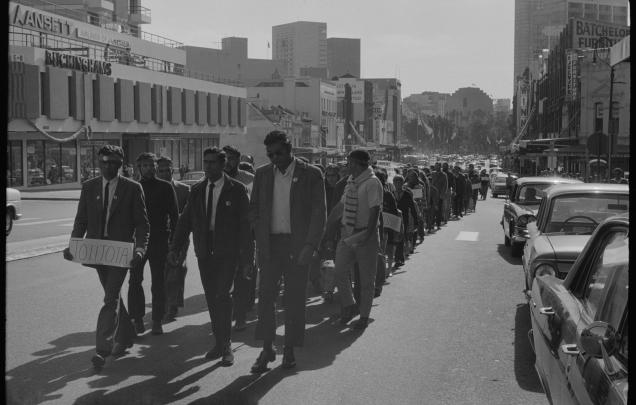Memorial and Protest
Students investigate how stylistic choices can be used to represent different perspectives and attitudes. They will assess the impact of context on shaping societal understanding and commemoration around Cook’s 8-day incursion at Kamay (Botany Bay) in 1770 and discuss how responses to Indigenous voices vary over time.

Motivations and actions
View Chapter 8 of the exhibition, ‘Memorial and Protest’, here.
Select a photograph from the exhibition. Work in pairs to present this photograph to the class, analysing how this photograph gives an insight into people’s motivations, emotions and behaviours, and evaluating this photograph’s contribution to the exhibition (considering why it was selected for inclusion will assist in your evaluation).
Watch the video of a news segment that appeared on This Day Tonight, on ABC television in 1970.
Discuss the importance and effectiveness of including a video as part of the exhibition. How does this video present two perspectives of the same event: first contact?
Here now, there then
This task uses the ‘Here now, There then’ visible thinking routine from Project Zero, Harvard Graduate School of Education. More information on this strategy can be found here.
Draw two columns on the board. Work as a class to complete the following:
- 29 April this year (2020) marked 250 years since Cook landed at Kamay (Botany Bay). In the first column brainstorm present stances, ideas, values, judgements and actions relating to the 250th anniversary of Cook’s arrival in Kamay (Botany Bay).
- Imagine you could travel back to 1970, when the 200th Anniversary of Cook’s landing was commemorated with celebrations. In the second column, brainstorm stances, ideas, values, judgements and actions of people in 1970 commemorating Cook’s arrival in Kamay (Botany Bay). It may be useful to go back to the online exhibition again to gain for more insight into the values and attitude of people 50 years ago.
- Compare the past and present perspectives in Columns A and B. Why do you think things have changed? Why did people in the past not think the way we do today?